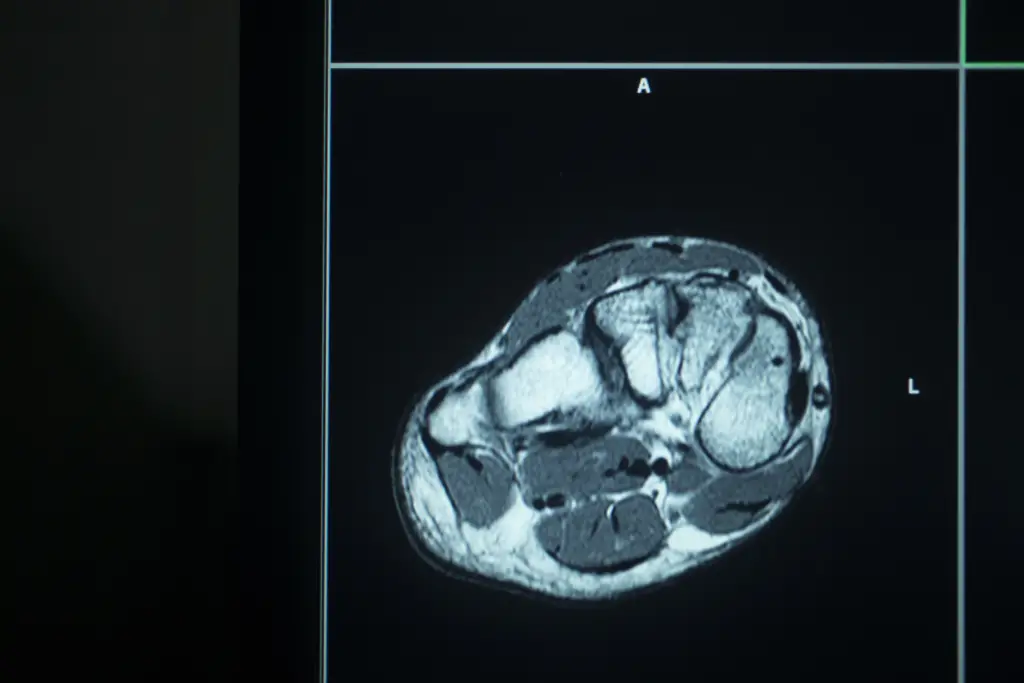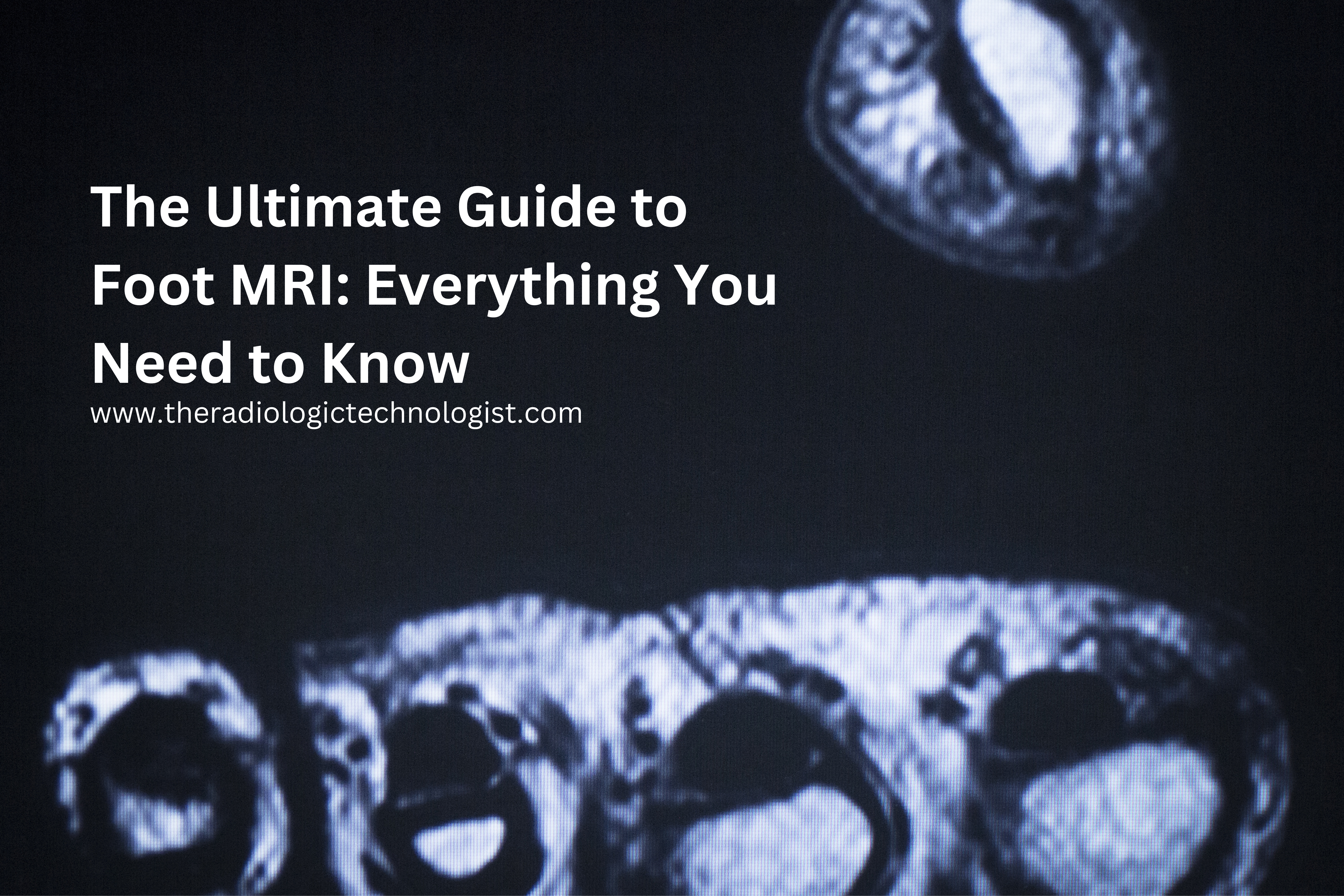Foot MRI is a cutting-edge diagnostic tool that has revolutionized the field of medical imaging, particularly for the intricate structures of the foot. This non-invasive technique offers doctors a detailed insight into the foot’s anatomy, enabling precise diagnoses and informed treatment decisions. Whether it’s to pinpoint the cause of persistent pain or to get a clearer picture of an injury, foot MRI stands as a beacon of modern medical technol
Magnetic Resonance Imaging of the foot, is a non-invasive diagnostic tool that helps in visualizing the internal structures of the foot. Unlike X-rays that rely on radiation, MRI uses a combination of magnetic fields and radio waves to produce detailed images.
Why is it Needed?
Foot MRIs are crucial in diagnosing and assessing various conditions, from bone fractures to tumors. It’s especially useful when dealing with soft tissue injuries, such as ligament tears or inflammation, where traditional X-rays might fall short.
How does it Differ from Regular X-rays?
While X-rays are great for viewing bones, they don’t capture soft tissues well. Foot MRIs, on the other hand, provide intricate details of both bones and soft tissues, offering a more comprehensive view of the foot’s anatomy.
The Science Behind Foot MRI
MRI, in essence, is a play of magnets and radio waves. Let’s decode the science behind it.
The Role of Magnetic Fields
When subjected to a magnetic field, certain atomic nuclei in our body resonate at a specific frequency. This is the principle MRI rides on.
Importance of Radio Waves
Radio waves, when directed towards these resonating nuclei, disrupt their alignment. Once the waves are turned off, these nuclei realign, emitting signals in the process. These signals are captured and converted into images.
Preparing for a Foot MRI
Before diving foot-first into the machine, here’s what you need to know.
Pre-Procedure Steps
Ensure you inform the technician about any implants or metallic objects in your body. Also, discuss any allergies or medical conditions you might have.
What to Wear?
Opt for loose, comfortable clothing without any metal zippers or buttons. In many cases, you might be provided with a hospital gown.
During the Foot MRI Procedure
Being inside an MRI machine can be a unique experience. Here’s a snapshot of what awaits you.
What to Expect?
You’ll lie down on a sliding bed that moves into the MRI machine. Once inside, it’s essential to stay still for clear images.
Duration and Feelings
A foot MRI can take anywhere from 30 minutes to an hour. While the procedure is painless, the machine can be a bit noisy.
Interpreting Results
Deciphering MRI images requires expertise. Here’s a brief on how it’s done.
Reading MRI Images
Radiologists analyze the MRI scans, looking at different shades of black and white, each representing various tissues.
When to Expect Results?
Typically, the results are available within a day or two, but urgent cases might get a faster turnaround.
Benefits of Foot MRI
MRI, with its incredible clarity, offers numerous advantages.
High-Resolution Images
Foot MRI provides a detailed view, which is crucial in diagnosing and treating intricate foot conditions.
Pinpointing Issues
With its ability to view soft tissues, MRI can pinpoint problems that might be missed by other imaging techniques.
Limitations and Concerns
Like any procedure, foot MRI comes with its set of considerations.
Concerns with Metal Implants
MRI machines and metal don’t mix well. Hence, if you have metallic implants, discuss potential risks with your doctor.
Claustrophobia and Alternatives
Being inside an MRI machine can be confining. If you’re claustrophobic, open MRIs or sedation might be options.

Cost and Insurance
Medical procedures can be expensive. Here’s the financial aspect of foot MRI.
Average Costs in Different Countries
In the U.S., a foot MRI can range from $500 to $3000, while in countries like India, it’s significantly cheaper. Source
Insurance Coverages
Most health insurance plans cover foot MRI, but it’s essential to check with your provider about any out-of-pocket expenses.
Foot MRI vs. Other Imaging Techniques
Foot MRI versus CT Scan
While both provide detailed images, CT scans use X-rays, making MRIs a safer option for repeated use.
Foot MRI vs. Ultrasound
Ultrasounds are quick and portable, but when it comes to detailed imagery, especially of soft tissues, MRIs reign supreme.
Common Conditions Diagnosed with Foot MRI
MRIs are a godsend when diagnosing several foot ailments.
Plantar Fasciitis
This painful condition involves inflammation of the foot’s bottom tissue. MRI helps in assessing its severity.
Stress Fractures
These tiny fractures can be hard to spot with X-rays, making MRI the preferred choice for diagnosis.
Post-Procedure Care
After your foot MRI, here’s what you should know.
Returning to Normal Activities
You can typically resume normal activities immediately after the procedure.
Side Effects to Watch Out For
While rare, some patients might experience allergic reactions to contrast agents used in MRI. Always inform your technician about any unusual feelings.
FAQs
What is the primary purpose of a foot MRI? Foot MRI is used to get detailed images of the foot’s internal structures, especially the soft tissues, aiding in accurate diagnosis and treatment.
How long does the procedure take? A foot MRI can range from 30 minutes to an hour, depending on the specifics of the examination.
Is the procedure painful? No, a foot MRI is a non-invasive and painless procedure. However, staying still might be slightly uncomfortable for some.
Can I get an MRI if I have metal implants? It depends on the type of implant. It’s vital to inform your technician about any metallic objects in your body.
How soon can I expect results? Generally, results are available within a day or two, but it can vary based on the facility and the urgency of the situation.
Are there any side effects? While side effects are rare, some patients might have allergic reactions to contrast agents used in certain MRI scans.
Conclusion
Foot MRI, with its unparalleled imaging clarity, is an invaluable tool in modern medical diagnostics. Whether you’re a patient curious about the procedure or someone keen on understanding medical imaging, we hope this guide provided the insights you were looking for.

